
by logisticsplus | Apr 21, 2021 | News
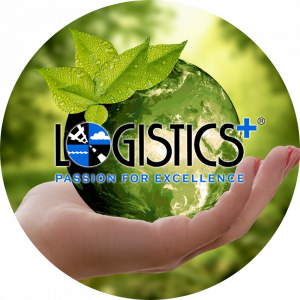 Environmental and sustainability concerns are on everyone’s mind in the logistics industry. In fact, nearly every supply chain and logistics company has created environmental policies that reflect its mission and goals. As the world strives to create a more eco-friendly, carbon-neutral environment, it’s important to understand the logistics industry’s role in achieving that goal. Here are a few tips for reducing your carbon footprint in logistics.
Environmental and sustainability concerns are on everyone’s mind in the logistics industry. In fact, nearly every supply chain and logistics company has created environmental policies that reflect its mission and goals. As the world strives to create a more eco-friendly, carbon-neutral environment, it’s important to understand the logistics industry’s role in achieving that goal. Here are a few tips for reducing your carbon footprint in logistics.
Select Green Suppliers
Selecting greener suppliers is a great first step towards reducing your carbon footprint in logistics. Choosing raw materials directly affects the environment as each material can have a vastly different carbon footprint. Before selecting raw materials, do some research on the supplier’s energy consumption, waste, and emissions. Keeping track of these vital environmental metrics can go a long way.
Optimize Your Supply Networks
Global supply chains often involve large supply networks that require air and ocean transportation. These modes of transportation largely contribute to greenhouse gas emissions which negatively impact the environment. Although there is no way to eliminate these transportation modes, it is possible to optimize your routes and consolidate your supply networks across shorter distances. This proves to be a great way to reduce your carbon footprint.
Use Eco-Friendly Transportation Options
There is more than one way to get from point A to point B. If a logistics provider only offers one mode of transportation, your options are limited. What if that’s not the most efficient route or mode of transport? Look for a company that offers a broad portfolio of services so that you can take advantage of the most eco-friendly transportation options. A good logistics provider will partner with carriers or organizations (like SmartWay Transport) that keep sustainability in mind.
Sustainability Through Technology
Having the right data at your fingertips is crucial for achieving carbon footprint reductions. Whether it’s through data evaluation or macro-level data consumption, technology can identify savings opportunities by completing optimization studies to find out the best way to distribute products efficiently. With technology’s importance growing in the supply chain, understanding how to utilize it can supplement your sustainability initiatives.
You should not underestimate the importance of reducing your carbon footprint in logistics. With more customers choosing green logistics partners that align with their beliefs, businesses should start with small, impactful steps to reduce their carbon footprint. Ultimately, there are more advantages of sustainable logistics in the long run.
As a part of our sustainability initiatives, Logistics Plus is proud to be the first corporate sponsor to enroll in the Restoring Integrity To The Oceans (RIO) Plastic Neutrality Program. Read the news release here for more details.

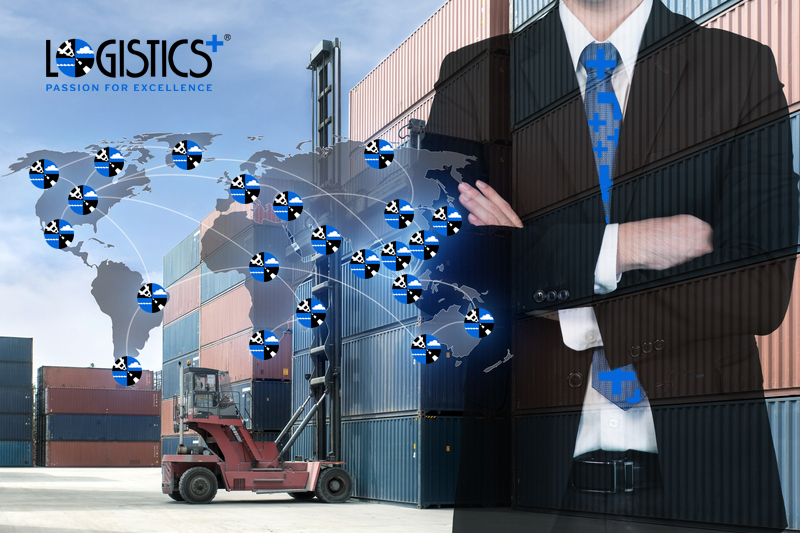
by logisticsplus | Feb 24, 2021 | News
 There’s an article we saw posted last week on the Global Trade magazine website entitled “What Makes a Good Logistics Provider?” written by Chris Hale, the Founder & CEO of Kountable, Inc. Mr. Hale’s company operates a platform that vets trade service providers, constructs deals and manages trade execution for a large volume of trades into challenging markets. As result, his firm has learned by necessity to identify the hallmarks of high-quality logistics providers and to note the red flags that signal ineffective ones. These are the qualities they look for in logistics partners they recommend to their clients, along with some comments about how Logistics Plus is an example of a logistics partner who has those same traits.
There’s an article we saw posted last week on the Global Trade magazine website entitled “What Makes a Good Logistics Provider?” written by Chris Hale, the Founder & CEO of Kountable, Inc. Mr. Hale’s company operates a platform that vets trade service providers, constructs deals and manages trade execution for a large volume of trades into challenging markets. As result, his firm has learned by necessity to identify the hallmarks of high-quality logistics providers and to note the red flags that signal ineffective ones. These are the qualities they look for in logistics partners they recommend to their clients, along with some comments about how Logistics Plus is an example of a logistics partner who has those same traits.
Experienced – A wave of brand-new companies have sprung up looking to fill the demand created by the COVID-19 pandemic. Always work with logistics companies that have been in operation for a number of years. Not only does this show that the company has a history of success, but experienced logistics providers will have a better understanding of local regulations and possible sticking points.
Logistics Plus will be celebrating its 25th anniversary this year. We were “born from the ribs” of GE Transportation as a lead logistics company. We have enjoyed growth every year, and today we have over 500 employees and over $300 million in global sales.
Good Customer Service Team – A professional, knowledgeable and robust customer service team will not only facilitate clear communication but is a sign of a quality company. Clear and effective communication from logistics providers also saves traders time and energy building and executing trades.
Logistics Plus humbly prides itself on providing award-winning customer service. In recent years, our services have been recognized as best-in-class by distinguished industry resources, such as Global Trade, SupplyChainBrain, Multichannel Merchant, Transport Topics, and others. Although we have transformed into a technology company as much as we are a logistics provider, it is still the quality of our people and the support they provide that sets us apart.
Responsive – It is important that logistics providers respond to messages quickly and are proactive in providing updates. When goods arrive at the right place on time, this should be communicated quickly. When communication is slow and sporadic, it is often the case that the company is unorganized, or goods are not where they are supposed to be.
Logistics Plus maintains a very flat, nimble, and responsive organizational structure. This allows us to be very responsive to our customers’ needs. Every employee is provided a company-issued mobile phone and we make it known that our customers expect 24/7/365 service to ensure their goods are delivered on-time. Our technology supports responsive communications by providing proactive tracking reports, weather impact dashboards, and other business intelligence that allow our employees and customers to more effectively manage their supply chains.
Diligent – The logistics of international trade are complicated. Attention to detail is necessary as goods change hands and pass-through ports. A diligent company will have the correct documentation for the goods and communicate effectively with the necessary parties, avoiding tax penalties, delays, and confusion that cut into revenue.
Logistics Plus is a global company with employees and offices in over 30 countries around the world. As a prominent international freight forwarder, we manage hundreds of thousands of import and export shipments around the world. We know diligence is important, which is why we also have a full-service customs brokerage and global trade compliance team to help keep us and our customers on pace with the changing rules of global trade.
Registered with Appropriate Government Agencies – Logistics providers must be registered with the necessary agencies to do business in the jurisdictions in which they operate, such as the local revenue authorities. It is important to confirm that the company is registered to conduct business in the countries where the goods are to be picked up and delivered, and anywhere they may land in between.
Logistics Plus maintains transparent certifications and compliance with all domestic and international agencies. Additionally, we are participating in many governmental programs focused on security and sustainability, such as CTPAT and SmartWay.
Global Presence – A global presence is both useful and a sign of a reputable logistics provider. However, many logistics providers do not operate globally. Minimally, the company you choose should operate in the countries relevant to the transaction. Established companies with a large presence are often more experienced, and may be able to offer additional services, or deal with complications more quickly and easily than smaller operations.
Logistics Plus has a network of people and resources that touch over 30 countries worldwide, and we have additional contacts and connections in many other countries. Whether it is standard freight forwarding cargo or big heavy-lift project cargo, we have engineers and logicians around the world making it happen.
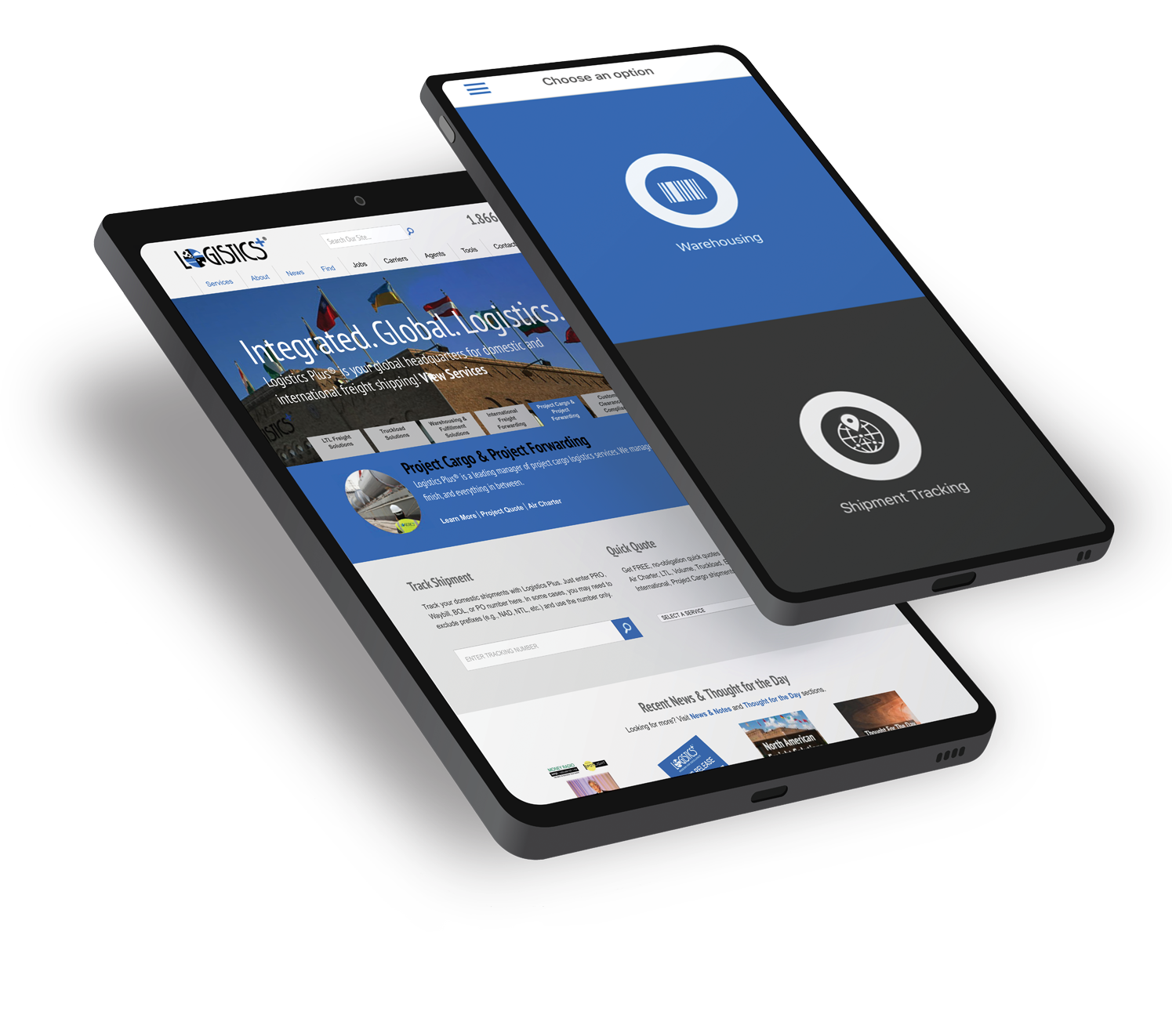 In addition to the comments noted above, check out the “What it means to be A 21st Century Logistics Company” article we posted last week which includes additional traits shippers should expect from contemporary logistics providers.
In addition to the comments noted above, check out the “What it means to be A 21st Century Logistics Company” article we posted last week which includes additional traits shippers should expect from contemporary logistics providers.
Check out the Global Trade magazine website at www.globaltrademag.com for other good articles on global trade and logistics. Global Trade has named Logistics Plus a Top 50 3PL the past two years and there is an active Logistics Plus Profile in the Global Trade “Find a Partner” online directory.

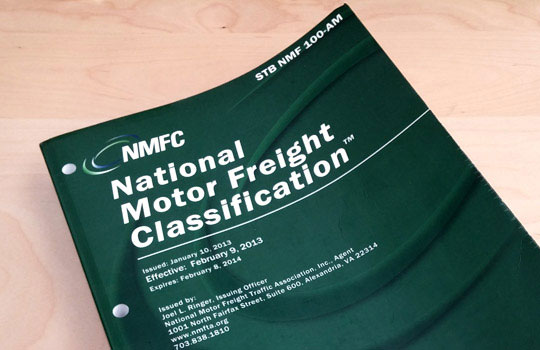
by logisticsplus | Feb 23, 2021 | News
 The Commodity Classifications Standards Board (CCSB) has published a new supplement to the National Motor Freight Classification (NMFC®). These changes became effective 04/10/2021. Some notable changes are listed below.
The Commodity Classifications Standards Board (CCSB) has published a new supplement to the National Motor Freight Classification (NMFC®). These changes became effective 04/10/2021. Some notable changes are listed below.
- Subjects 2 and 3 – Foodstuffs Group – Bakery Goods, Coffee, Tea or Herbal Tea, Cookies or Crackers, Foodstuffs, NOI, Snack Foods, NOI: These items were canceled and replaced with Item 73260 which is an 11-tiered density item. Canceled Items 72040, 72042, 72043, 72270, 72271, 72560, 72561, 72680, 72681, 73270, 74800.
– “Breads, Rolls and Cake” were removed from 73227 and moved into the new Item 73260.
- Subject 5 – Chemicals Group Item 42600: Numerous changes to this group that are too complex to re-state here. Basically, items were revised into three class Tiers based upon Packing Groups I, II or III. Statements also added identifying Items that are not required to bear a Hazard Class or Hazard Division label.
- Subject 7 – Stairs or Stairways, Ramps – Item 178160: Revised from a two-tiered class/density item to two sub-groups based on the Greatest dimension exceeding or not exceeding 96 inches. Each sub-group has three class/density tiers.
- Subject 15 – Glass, flat, bent or not bent NOI – Item 86700 nad Glass , silvered for Mirrors – Item 86900: Revised from two subgroups, three-tiered class/density item based on Greatest Dimension exceeding or not exceeding 96 inches to two subgroups based on Greatest dimension exceeding or not exceeding 96 inches. Each sub-group has seven class/density tiers. Item 86900 is canceled and moved into Item 86700.
- Subject 16 – Item 235 – Specifications for Bundles, Coils, Reels, or Rolls: Item amended to ensure that products or items so tendered will withstand the normal rigors of LTL transportation.
- Subject 17 – Item 270 – Definition or Specifications for Skids, other than Lift Truck: Item amended to ensure that products or items so tendered will withstand the normal rigors of LTL transportation.
- Subject 24 – Item 82285 Sneeze Guards or Food Shields: Revised from a two tiered Item based on Greatest Dimensions exceeding or not exceeding 96 inches to two subgroups based on Greatest Dimensions exceeding or not exceeding 96 inches with four class/ density tiers in each sub group.
- Subject 25: References to open head and closed head drums or pails in the Items below are updated.
– Rules 257, 258, 260, 296
– Packages 600 and 2467
- Subject 36: This subject cancels 55 obsolete Classification Items
- Subject 37: This subject cancels four obsolete classification Items.
- Subject 38: This subject cancels and removes references to 25 numbered packages.
- Subject 39: This subject cancels and removes references to 16 numbered packages.
- Subject 40 – Item 149942 Note on Nickel-Silver Wire Item 140940: This note 140942 applied to shipments of less than 30,000 lbs. It is canceled.

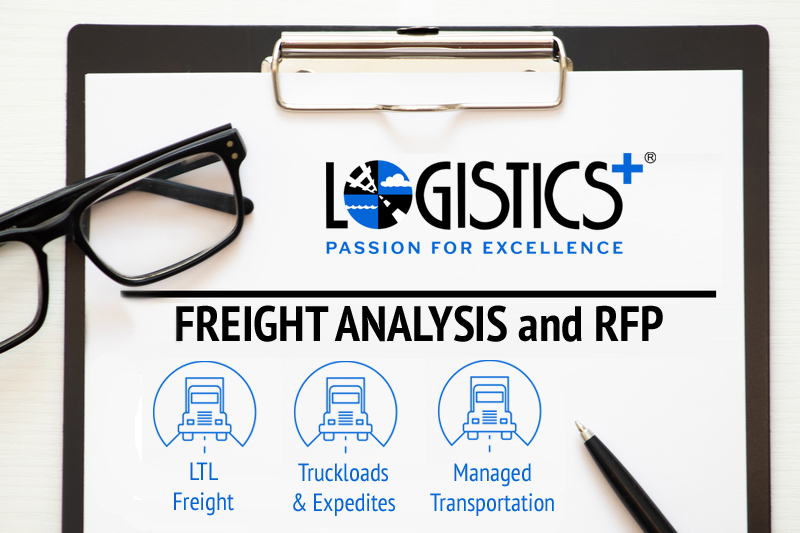
by logisticsplus | Feb 15, 2021 | News
 As widely reported by freight industry media outlets, such as Freightwaves, Logistics Management, Journal of Commerce, and others, general freight rates – including those for less-than-truckload (LTL) services – continue to rise. Most experts are predicting high, single-digit rate increases in 2021, along with higher diesel fuel prices. Renewed economic demand, increases in e-commerce shipping, the influx of container shipments at the ports, limited truck capacity (the top 25 LTL carriers comprise 90% of the LTL market), scarcity of qualified drivers, and COVID-19 outbreaks and restrictions are all driving truckers to raise rates – particularly for small- and mid-sized freight shippers.
As widely reported by freight industry media outlets, such as Freightwaves, Logistics Management, Journal of Commerce, and others, general freight rates – including those for less-than-truckload (LTL) services – continue to rise. Most experts are predicting high, single-digit rate increases in 2021, along with higher diesel fuel prices. Renewed economic demand, increases in e-commerce shipping, the influx of container shipments at the ports, limited truck capacity (the top 25 LTL carriers comprise 90% of the LTL market), scarcity of qualified drivers, and COVID-19 outbreaks and restrictions are all driving truckers to raise rates – particularly for small- and mid-sized freight shippers.
Logistics Plus is a top freight brokerage firm with substantial freight spend and contracts with many leading carriers. That allows us to pass on competitive rates to our customers who might not otherwise have the freight volumes or expertise to negotiate competitive rates on their own. Additionally, when our own “general pricing” contracts are not competitive enough or lack certain customizations for a specific shipper’s freight profile, we can also negotiate “client-specific pricing” contracts for our customers too.
To get started, Logistics Plus offers risk-free freight analyses to shippers curious to know if they can save additional money on their freight spend. All we need is a sample shipment file (ideally three months or greater in Excel format) with, at minimum, the following data:
- Origin Zip Code
- Destination Zip Code
- Shipment Weight (in pounds)
- Freight Class (or detailed commodity description so we can ascertain the correct freight classification)
- Handling Units and Packaging Type(s)
Additionally, the following optional information is also helpful if it is available:
- Shipment Dimensions (L”xW”xH”)
- Accessorial services provided
- Actual freight charges (freight, fuel, and accessorial fees)
- Actual LTL carrier used
Using the information above, Logistics Plus will run a detailed freight analysis to determine if existing Logistics Plus contracts and carriers will result in material savings. If the initial study demonstrates potential savings, the customer will be asked to complete a Logistics Plus Customer Setup Application (if not already done) to obtain a shipping account to begin realizing the savings.
If the initial analysis does not demonstrate potential savings, or if the customer has specific pricing requirements that cannot be met with existing Logistics Plus contracts and carriers, then – if the customer is willing and able to complete the following Letter of Authorization (LOA) and RFP Checklist – Logistics Plus will conduct a client-specific request for proposal (RFP) to obtain more competitive pricing on behalf of the customer. Note: Customer is not required to activate or use RFP pricing; however, the LOA is required to go through the process. After client-specific pricing is activated, the customer should complete a Logistics Plus Customer Setup Application (if not already done) to obtain a shipping account and begin realizing the savings.
Contact us if you’re ready to have Logistics Plus conduct a risk-free freight analysis on your behalf. We’re here to help!


by logisticsplus | Dec 29, 2020 | News
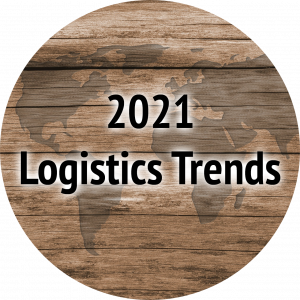 If 2020 taught us anything, it’s that the future is always uncertain. The global pandemic that shook the world has altered and disrupted the logistics and supply chain industry for years to come. Companies have an increased urgency to fill the gaps in their supply chain that the pandemic exposed. To prepare for 2021, we dive into some of the top supply chain and logistics trends to look for this coming year.
If 2020 taught us anything, it’s that the future is always uncertain. The global pandemic that shook the world has altered and disrupted the logistics and supply chain industry for years to come. Companies have an increased urgency to fill the gaps in their supply chain that the pandemic exposed. To prepare for 2021, we dive into some of the top supply chain and logistics trends to look for this coming year.
Sustainability
One notable trend in the supply chain and logistics industry is the advancement of environmentally-friendly logistics practices. Besides benefitting us and our planet, it’s cost-effective, promotes a good brand, and increases customer loyalty. Most logistics companies are joining sustainability partnerships and organizations that promote cleaner fuel, more efficient equipment, and lower emissions. As we shift to 2021, look for even more businesses to lower their carbon footprint to align with this sustainability trend.
Supplier Diversification
As 2021 begins, logistics companies continue to find ways to incorporate diverse suppliers in their daily operations. Ideally, supplier diversity programs combine social responsibility with the desire for a better and more inclusive world. Not only does supplier diversity benefit under-represented businesses, but it also increases the economic impact of our nation by creating more jobs and higher wages for all. Small and minority-owned businesses will play a major part in supply chains moving forward.
Supply Chain Visibility
15 years ago, supply chain visibility was virtually an unknown term. Today, visibility has become a must-have for supply chain managers around the globe. Increased communication is a major factor for improving supply chain visibility because it allows companies to identify the gaps in their current processes. Visibility also ensures that you are knowledgeable about every aspect of your product’s life cycle and inventory levels, which can help you improve performance and reduce errors.
The Growth of Omnichannel
This past year has taught us that in order to succeed from a sales standpoint, companies need to maximize every available sales channel. These channels include e-commerce, direct-to-consumer, retail, and distributors. Whether a customer is shopping online or in-person, your business should be able to offer convenient omnichannel services. By consolidating demand and optimizing your supply chain strategy across every channel, companies can maximize service, minimize costs, and grow revenues.
Flexibility
In 2020, companies quickly learned that they must be flexible and agile to overcome supply chain disruptions. To ensure stability, companies must ensure that their supply chains are agile enough to cope with unknown events such as pandemics, natural disasters, and the changing costs and availability of raw materials. In 2021, companies must have contingency plans in place so that they can respond quickly to disruptions in production, supply, and delivery.
Staying ahead of these supply chain and logistics trends can ensure that supply chain disruptions have a minimal effect on your business. By embracing new trends and technologies, the industry is set to face new challenges and achieve greater efficiency.



Page 4 of 12« First«...23456...10...»Last »

 Environmental and sustainability concerns are on everyone’s mind in the logistics industry. In fact, nearly every supply chain and logistics company has created environmental policies that reflect its mission and goals. As the world strives to create a more eco-friendly, carbon-neutral environment, it’s important to understand the logistics industry’s role in achieving that goal. Here are a few tips for reducing your carbon footprint in logistics.
Environmental and sustainability concerns are on everyone’s mind in the logistics industry. In fact, nearly every supply chain and logistics company has created environmental policies that reflect its mission and goals. As the world strives to create a more eco-friendly, carbon-neutral environment, it’s important to understand the logistics industry’s role in achieving that goal. Here are a few tips for reducing your carbon footprint in logistics.







 If 2020 taught us anything, it’s that the future is always uncertain. The global pandemic that shook the world has altered and disrupted the logistics and supply chain industry for years to come. Companies have an increased urgency to fill the gaps in their supply chain that the pandemic exposed. To prepare for 2021, we dive into some of the top supply chain and logistics trends to look for this coming year.
If 2020 taught us anything, it’s that the future is always uncertain. The global pandemic that shook the world has altered and disrupted the logistics and supply chain industry for years to come. Companies have an increased urgency to fill the gaps in their supply chain that the pandemic exposed. To prepare for 2021, we dive into some of the top supply chain and logistics trends to look for this coming year.
